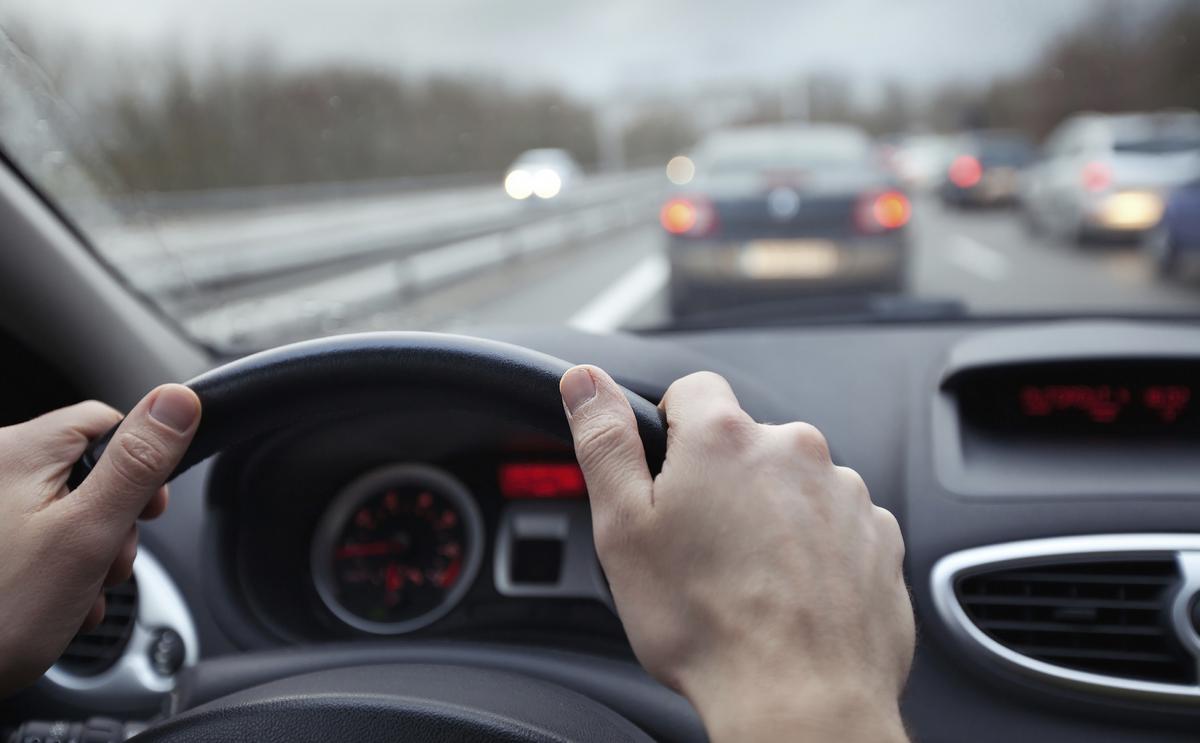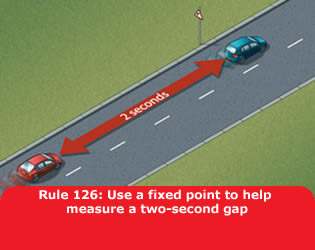
Always drive at a speed which allows you to stop in time with a comfortable free distance in front of you. This is necessary because you must have an adequate distance from the vehicle ahead of you so that, if it stops unexpectedly, you will be able to stop in time.
The following chart shows how speed affects the actual stopping distance, which is the sum of the thinking distance (distance the vehicle is going to travel before the driver starts to react) and the braking distance (distance travelled while braking). Thus, a driver travelling at a speed of 112 km/hour will travel about 21 meters before he starts to step on the brakes and about another 75 meters while braking, making the total distance required to immobilize the vehicle to be about 96 meters!
Advice for better calculation of the safe distance

- Select a fixed point which the vehicle in front of you is about to pass (for example a signboard or a lighting mast) and count two seconds (saying “1001”, “1002”). You should pass the same fixed point exactly at that time. In case of rain, you should allow a four-second distance and an even longer one, in case of icy road.
- Remember: large vehicles (trucks), as well as motorcycles, need a greater stopping distance, so you should leave a four-second distance ahead of you in these cases.

